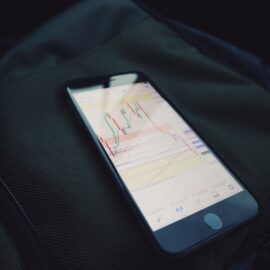

This article is an excerpt from the Shortform book guide to "Capital in the Twenty-First Century" by Thomas Piketty. Shortform has the world's best summaries and analyses of books you should be reading.
Like this article? Sign up for a free trial here .
What is the capital-to-income ratio? How does it help us understand wealth inequality?
According to Thomas Piketty, the capital-to-income ratio is the total stock (meaning the total inventory) of all the assets owned by residents of a country divided by total national income. Piketty further stresses that national capital and national income aren’t the same things.
Keep reading for an in-depth look at the capital-to-income ratio.
Understanding the Capital-to-Income Ratio
Capital in the Twenty-First Century explores one of Piketty’s core insights—the capital-to-income ratio. The capital-to-income ratio is at the heart of this analysis of income and wealth inequality.
In most countries, he notes, this is something like a 6:1 ratio. In other words, the value of a country’s capital stock (which is accumulated over time and often passed down from generation to generation) is six times greater than a single year of its national income. Or, to put it another way, the national capital stock is 600% of the national income (which, remember, includes both labor income and capital income).
Piketty further stresses some important differences between national income and national capital. National income is a flow, measuring a nation’s total income within a specific timeframe (usually a year). Thus, it is a proxy for the wealth earned in the present. But national capital is a stock—it measures the total value of all the nation’s accumulated capital at a particular moment. And at any given point in time, the vast majority of that capital has been accumulated in the past.
Marxism’s Falling Rate of Profit and Crisis Theory
The capital-to-income ratio is a measure of the concentration of capital within an economy. Some variants of Marxist theory argue that when the accumulation of capital reaches a point of oversaturation, the owners of that capital will no longer have productive opportunities to invest it—in other words, returns will fall to zero in a society that has become too capital-intensive because all profit-earning enterprises will have already been maximized. For example, if a factory owner is already producing at full capacity, adding new units of capital (like machinery or new buildings) will not bring her any additional profit. She will have exhausted the productive capacity of her capital and be unable to earn any additional profits with the capital she owns.
Therefore they argue that because the engine of capitalism relies on the prospect of future profits, the unchecked accumulation of capital leads the system to plant the seeds of its own destruction by eroding these future profits. Marxists call this the tendency of the rate of profit to fall (TRPF), and it is central to the Marxist idea of crisis theory, in which capitalism collapses under the weight of its own excess.

———End of Preview———
Like what you just read? Read the rest of the world's best book summary and analysis of Thomas Piketty's "Capital in the Twenty-First Century" at Shortform .
Here's what you'll find in our full Capital in the Twenty-First Century summary :
- An analysis of incomes, tax returns, and estate tax returns across different countries
- How capitalism, by its nature, generates economic inequality
- How inherited wealth will soon account for more than earned income





